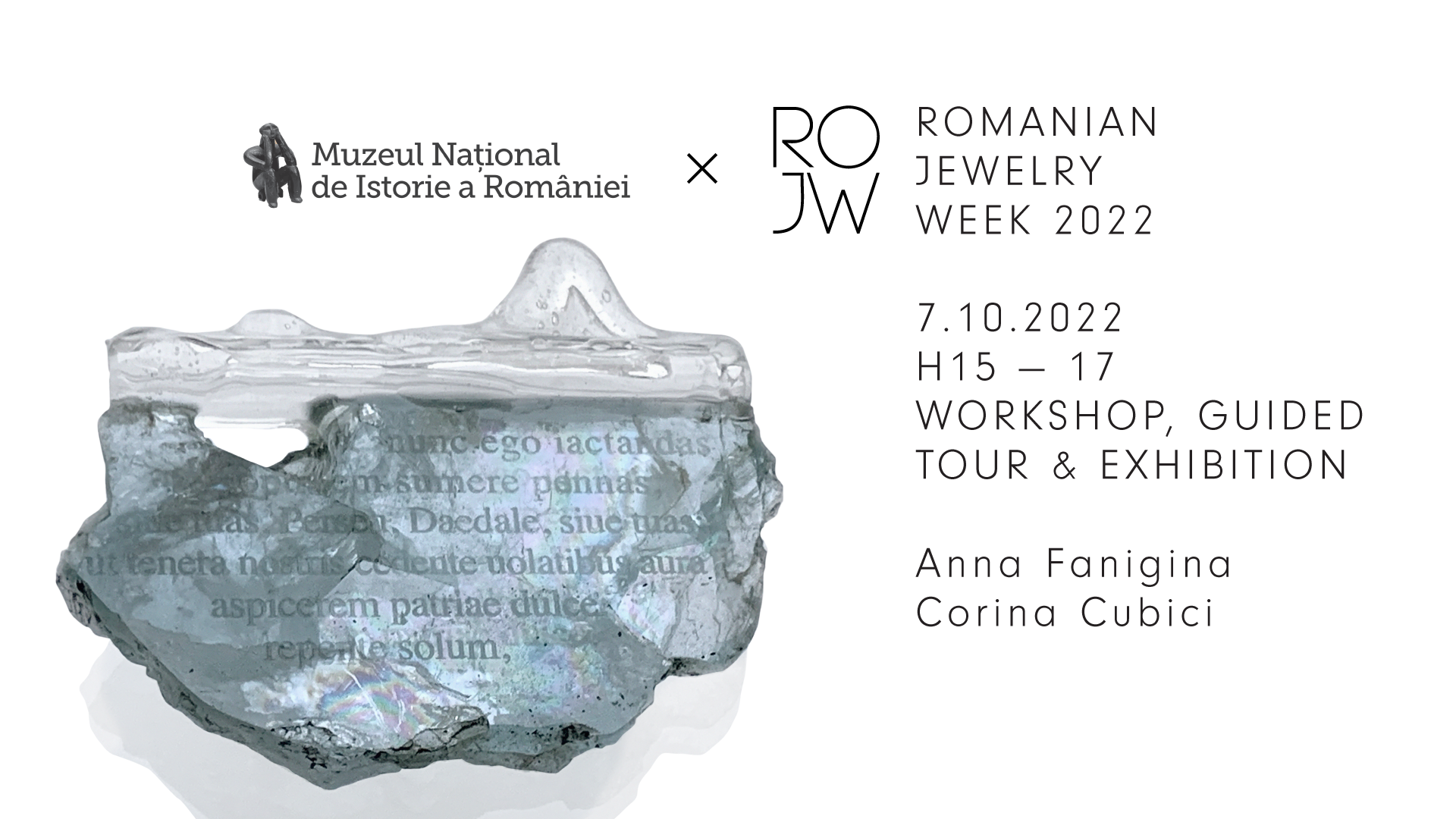Photo credits - Verba by Anna Fanigina - Latvia
National History Museum of Romania - Demonstration workshop of stone faceting, capsule jewelry exhibition with Corina Cubici and Anna Fanigina and guided tour in the Historical Treasure
Between the 5-9 th of October 2022, The National History Museum of Romania is a special partner of Romanian Jewelry Week 2022, proposing in collaboration with Assamblage a series of demonstration workshop of stone faceting, capsule jewelry exhibition with Corina Cubici and Anna Fanigina and guided tour in the Historical Treasure.
Visiting schedule - Capsule exhibition Corina Cubici (Romania) and Anna Fanigina (Latvia)
5 - 9 October 2022
10.00 - 18.00
Special event - 7th of October 15.00 - 17.30 - Demonstration workshop of stone faceting by David Sandu, founder of Assamblage Art and Design Institute and Curator of Romanian Jewelry Week + Guided Tour in the Historical Treasure. Acces is made with the regular entrance ticket for the museum available here - https://mnir.booktes.com/#2020-12-07
Address - Calea Victoriei 12, Bucuresti 030026
HISTORICAL TREASURE
In the Historical Treasure there are displayed over 3000 valuable items, made of precious metals and gems belonging to civilizations that inhabited, over time, the current territory of our country, or depicting events and historical figures from the past. In a dedicated area, specially built for them, are hosted a full size copy of Trajan’s Column from Rome, an extraordinary monument of Antiquity, and the Lapidarium exhibition displaying epigraphic and architectural monuments dating from Antiquity and the Middle Ages (civil monuments – documents, decrees, and honorary monuments, religious ones too – funerary and votive monuments, sculpture and decorative and architectural elements).
EPISTULAE Collection by Anna Fanigina - VERBA (Latvia)
The collection is based on the impressions of reading Ovid’s “Letters from Pontus” and “Sorrowful Elegies”. In the 1st century A.D., the Roman poet was exiled to a distant city on the Black Sea coast, to the outskirts of the civilized world, where he closed his days. All his pain, loss, loneliness and perceived unfairness were poured out in his last poems. However, in these same poems we see the invariable strength of the spirit, the readiness of culture to resist a hostile environment, the inextinguishable hope of deliverance, inner freedom, the confidence that the woes embodied in verse will remain in history and art for centuries, and this is their great value and victory.
A collection of pendants made of transparent, almost untreated topaz, aquamarine and quartz with laser engraving of Ovid’s poems was created for installation in the National Archaeological Museum of Adria (Italy) in 2019, where it was exhibited together with vessels made of ancient Roman glass from the 1st century A.D. Each piece corresponds to its own vessel, giving a reference to the tradition of sending letters in bottles to the sea for future generations. Transparent pendants look like petrified waters of the raging elements, through which the poet risked his life to reach the place of exile, or like pieces of ice, first seen and amazed the poet in the north, or like frozen accumulated tears that turned into poems. This is a conversation about the transformation of the fragile and strong, fluid and solid, eternal and fleeting.
PAFTALE Collection by Corina Cubici (Romania)
In the wide range of jewelry found in Romanian dresses, my focus falls on a certain piece - ,,Paftale" or the pafta. It is an element worn for the most part by women which also has variations for men. Its origins are from the orient, however, in our cultural space this element was borrowed and empowered with a special meaning and value. The use and way it is worn will forever be clear : it is still meant to be worn around the waist, it still needs to be closed tight in order to hold the clothes close to the body. My work focuses on playing with the style, with the elements, with the materials, with the stones . The symbols and meanings of the older pieces are not lost on me . The people that made these special pieces in the past had a way of relating to the elements and symbols represented. I have my way today. The elements of nature remain the same as they always were and only the method of showing them today in my work is different. Deep down, what I wish to accomplish is a bridge between the old world, what they did and what they represented into a modern time with just as much importance and significance to the people that wear them today.
The National History Museum of Romania, founded in 1972, is one of the emblematic institutions of Romanian culture. The museum is housed in a historic building formerly called the Palace of the Posts, located in the old city center of Bucharest. The building was erected between 1894 and 1899 and was designed by architect Alexandru Săvulescu (1847-1902), who drew his inspiration from the Federal Post Palace in Geneva, Switzerland.















